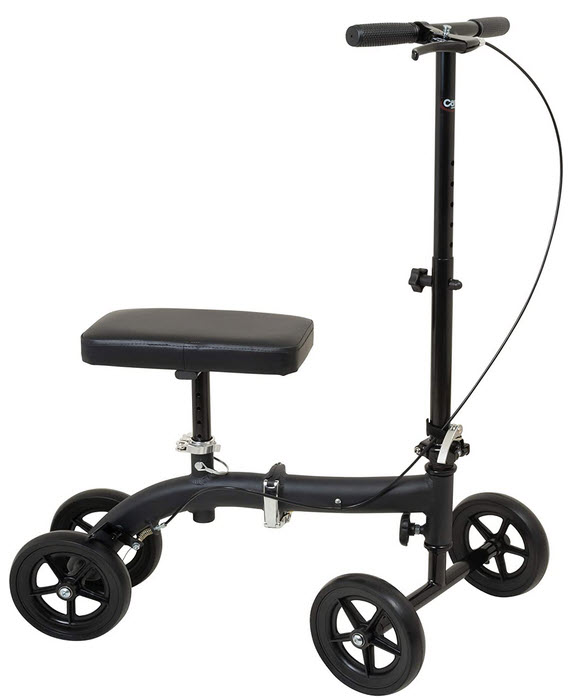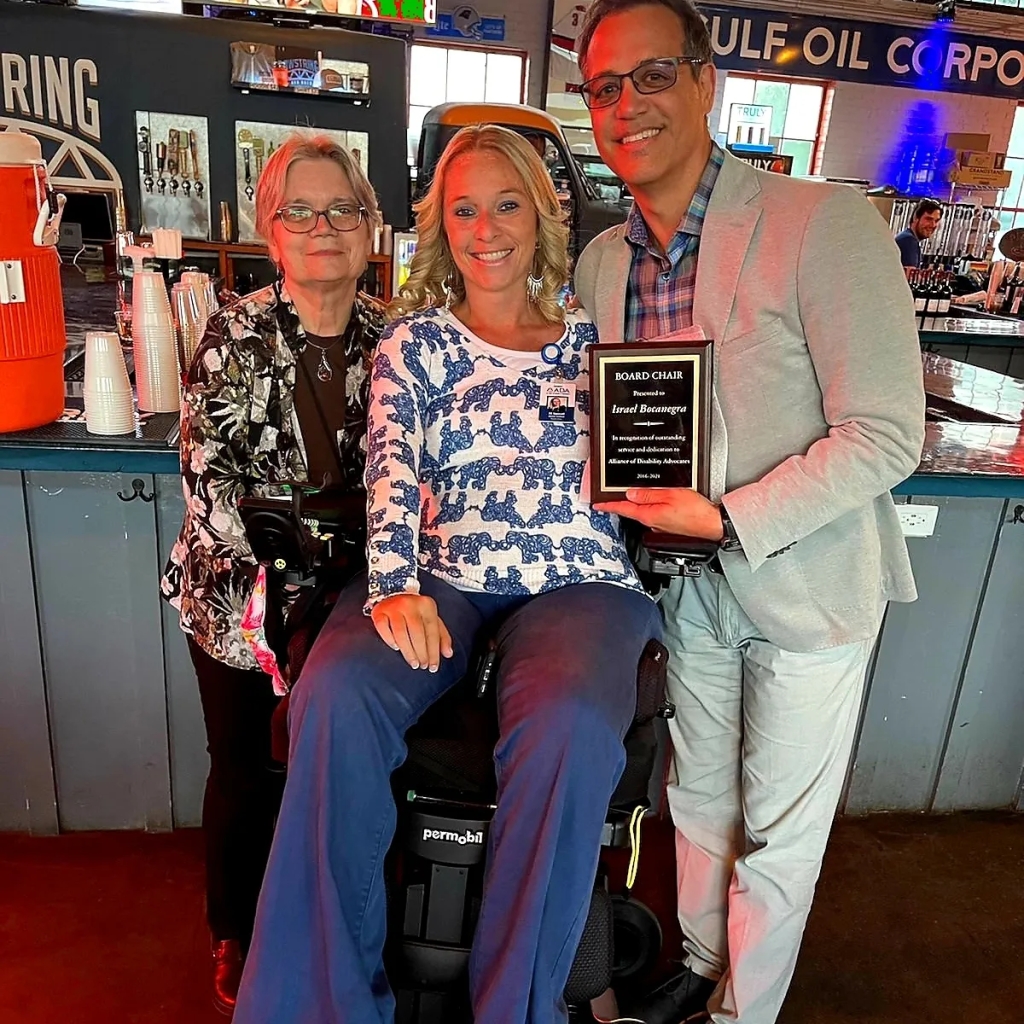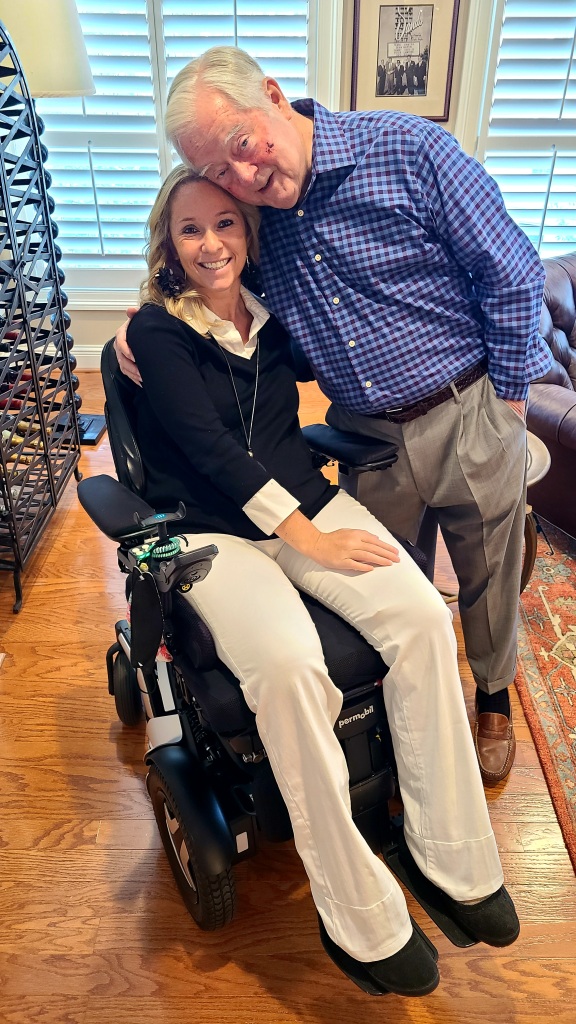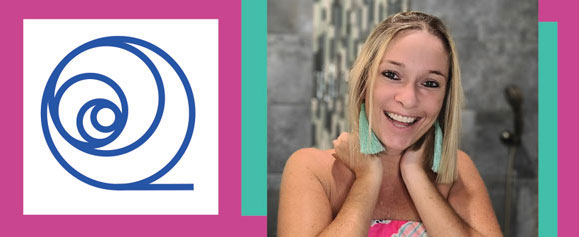
Do you know all the general categories of disability and what they mean?
- Deaf / Hard of Hearing
- Mobility / Dexterity impairments
- (i.e. Wheelchair user, restricted movement, balance challenges, limb difference, tremor)
- Chronic Ailments
- (i.e. Diabetes, ALS, multiple sclerosis, heart conditions, epilepsy, chronic pain)
- Blind / Sight Loss
- Learning Difficulties
- (i.e. Dyslexia, Dyspraxia)
- Mental Health
- (i.e. Clinical depression, PTSD, Anxiety)
- Neurodiverse
- (i.e. Autism spectrum, sensory disorder, ADHD)
- Age Related Disabilities
Whether you were born with a disability, acquired one throughout your life, have had a temporary disability due to a broken arm requiring special accommodations for a period of time, or are just getting older — I’m pretty sure everyone on the planet, at one time or another, has had to deal with hardships requiring specialized solutions to help you adapt to your life.
Really think critically about this. If you have had no exposure to disability and you suddenly break your leg, have a cast put on it, and have to use one of those little rolling scooter type bikes where you push with your good leg and put your cast leg on the little seat — you’re going to need special accommodations over the course of 6 to 12 weeks while your leg heals.

What are you going to need?
You are going to need curb cut outs so you can cross the street; an elevator to get to different floors; no stairs because you’re not going to get very far unless you drag yourself; an accessible shower or tub to bathe; the right height counters in public and private spaces; the list goes on.
Ordinarily, in your able-bodied life you would just go about climbing stairs and hopping over curbs, but with your now temporarily disabled lifestyle you need help. Now, think about the over 1 billion of us who require regular special access needs in order to go about our days as contributing members of society and living a life with grace, dignity, and independence.
My guess is if you critically think about what I am writing, the next time you pop to the grocery store look at every obstacle in your way. Think about what this would take for someone who is blind or has a significant mobility impairment to overcome without adapted accommodations?

Universal Design
Definition: Design that’s usable by all people, to the greatest extent possible, without the need for adaptation or specialized design
This is where universal design really comes into play for so many of us in everyday products, services, and experiences. Let’s take an obvious example:
- Alexa – how convenient is it that you can just say “Alexa, play Paul Simon radio.” Now, think about it from a safety and disability perspective from someone who is unable to leave their bed unassisted. Not only can they play music, but they can call 911. Universal design in action! It’s not just adapted technology for those with disabilities, but universal design for everyone.
- Voice Dictation Software – extremely convenient for anyone who does not feel like typing or prefers to dictate their thoughts. Now, think about those with a range of disabilities from serious mobility impairments who are unable to use their hands or someone who simply broke their wrist and is unable to type? Again, universal design in action.
It’s important to remember though that accessibility is a spectrum and one size does not fit all. Taking the Voice Dictation Software example for a moment – it doesn’t work for many who are deaf or hard of hearing because of deaf accents. However, it is a step in the right direction with inclusion as the intent. This is what matters.

So, why are disability inclusion and accessibility priorities still lagging so far behind in our society? We are certainly making strides and advancements from products and services to medical solutions, but these things take time. More than time, they take champion advocates across the globe constantly pushing for equal access and inclusion into our everyday lives.
I’m always keen to push people to think differently, empathize more, and offer perspective shifts in the way we approach challenges. People with disabilities are some of the most creative problem solvers you will ever meet on the planet. So many of us deal with more hardships than most could comprehend. This requires creativity, tenacity, and determination to push the limits of what is possible.
Inclusive Design and Accessibility
I recently attended a tech accessibility summit in Washington DC called M-Enabling with many of the top accessibility leaders from corporations and community organizations around the planet. I met the most delightful lady working in the Diversity, Equity, Inclusion space for a major tech company. She is marvelously funny, infectious with her laugh, impressive in her thinking, and she happens to be blind.
I was sitting next to her during a speech when she popped out a wireless keyboard with braille overlaid on top of it and put her smart phone next to the keyboard. I don’t think I’ve ever seen anyone type as quickly as she started notetaking during a panel we were listening to. I was watching this impressive technology translate typing from her keyboard onto a notepad with incredible formatting on her phone.
Truly accessible technology in action. The whole conference focused on advancements in digital accessibility and inclusive design. What I did find interesting though, for those of us in wheelchairs during the conference, was the lack of accessibility with respect to the height of the buffet stands or the lack of accessible food regarding how challenging it was to independently pick up the food with mobility dexterity challenges.
Accessibility and Inclusion is a journey and we are all going to get it wrong. Whenever we are developing new standards, policies, procedures, laws, technologies, etc. there are going to have to be multiple iterations to constantly improve products and services and experiences to, not only make them more accessible, but inclusive to the wider population within our society.

Why Should You Pay Attention?
Even if you live your entire life as a healthy able-bodied person with physical or invisible disabilities, as you age, you are going to require more help in a more inclusive society even if you don’t think about it in your younger years.
You may need larger font to read on your computer as your eyesight diminishes; or barrier free entries into buildings as mobility impairments start to affect your walking; or voice dictation software because arthritis might be starting to affect your typing skills, etc.

Disability is the one issue in our society that truly doesn’t discriminate. It does not care about your sexual preference, your race, your religion, or your belief system. It can affect you any moment and may have already done so. This is why we need to take a more thoughtful and intentional look at the way we approach everything in our lives from disability inclusion in the workplace, different access needs in the digital and physical world, and taking an empathetic lens when simply speaking with a stranger.
Disability either touches you every day personally or a loved one you know or will eventually touch you later on in your life. Pay attention, be proactive, and get active!




